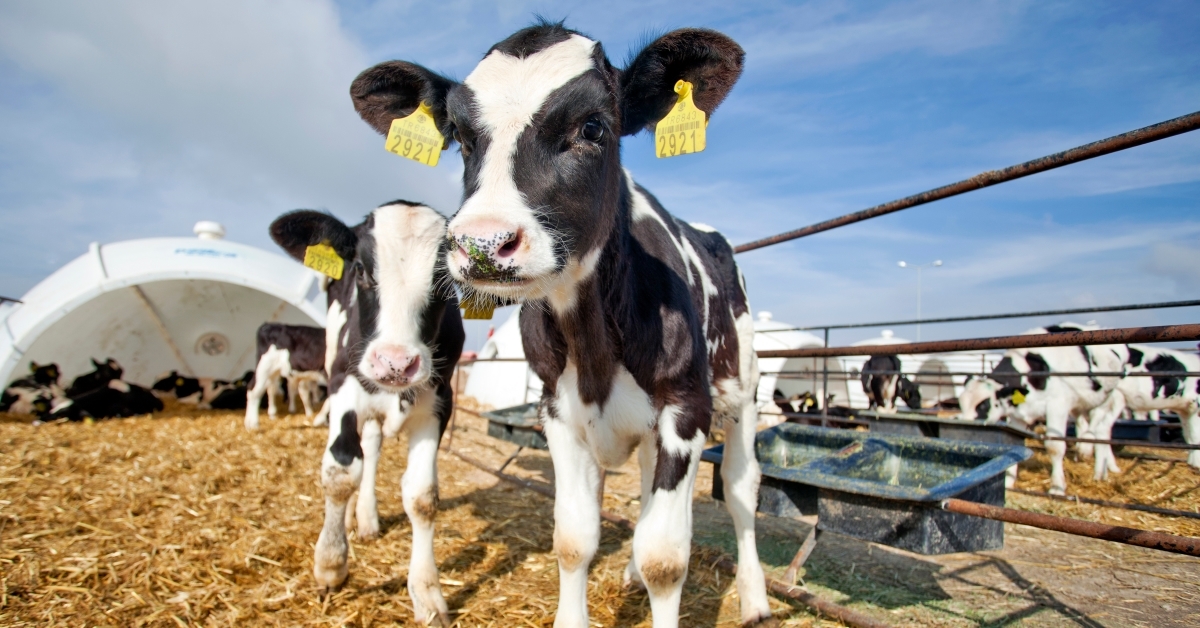
The summer heat is here, and it’s time for the cows to kick back with some icy drinks by the wading pool or sit inside under the protection of air conditioning units. Unfortunately, our cows don’t have an easy way of avoiding the heat and sun. Unless we offer them some heat abatement technology, such as fans, soakers or misters, they are stuck handling the heat throughout the day until it, hopefully, cools off overnight.
The dairy industry is no stranger to the hugely adverse impacts of heat stress on our cows. Research shows that environmental heat stress in the dry period alone causes $810 million in milk losses annually in the United States. However, this figure does not include the losses associated with calves born to heat stress in the 3rd trimester, specifically during the dry period, which can be extremely detrimental. We are learning that, even in utero, calves can’t handle the heat.
During late gestation, the pre-natal calf fetus gains 60–70% of its overall body weight, therefore requiring exceptionally high quantities of portioned energy, nutrients, and support from the dam during this time. Recent research focusing on late gestation heat stress has shown significantly negative impacts not only for the dam herself — including drops in colostrum quality, quantity, and milk production — but also in calf performance and health. Results from two University of Florida studies are shown below in Table 1.
Table 1: Impact of maternal dry period heat stress on colostrum quality, calf performance and health.
|
Monteiro et al., 2014 |
Cooled dams |
Heat-stressed dams |
|
Cooling technology |
Fans, sprinklers and shade |
Shade only |
|
Dam colostrum IgG concentration (g/L) |
94.7 |
86.8 |
|
Serum IgG at 24 h of age (g/L) |
27.7 |
25.7 |
|
Apparent efficiency of absorption (%) |
27.0 |
22.7 |
|
Birth weight (lbs.) |
95.0 |
84.4 |
|
Weaning weight (lbs.) |
167.5 |
147.7 |
|
ADG (lbs./d) |
1.25 |
1.14 |
|
Monteiro et al., 2016 |
|
|
|
Cooling technology |
Fans, sprinklers and shade |
Shade only |
|
Birth weight (lbs.) |
98.7 |
86.2 |
|
Stillborn rate (%) |
0.0 |
4.1 |
|
Heifers leaving herd before puberty due to sickness, malformation or growth retardation (%) |
2.4 |
18.2 |
|
Heifers completing first lactation (%) |
85.4 |
65.9 |
|
First lactation milk production (lbs./day) |
70.4 |
59.1 |
The results from these studies show that calves born to heat stressed dams have decreased herd survivability and a reduction in IgG absorption and growth performance through weaning. More recent published University of Florida research was a long-term study looking at the impacts of late-gestation heat stress on daughter and granddaughter performance (Table 2). The results of this study prove that the consequences of heat stressed cows are significant, and to ensure the long-term productivity of the herd and the dairy, cows must be cooled, especially in the last 60–90 days pre-calving.
Table 2: Impact of maternal dry period heat stress on daughter and granddaughter production.
|
Laporta et al., 2020 |
Cooled dams |
Heat-stressed dams |
|
Cooling technology |
Fans, soakers and shade |
Shade only |
|
Daughters: |
|
|
|
1st lactation (lbs./day) |
69.2 |
64.3 |
|
2nd lactation (lbs./day) |
80.9 |
75.8 |
|
3rd lactation (lbs./day) |
87.3 |
72.9 |
|
Granddaughters: |
|
|
|
1st lactation (lbs./day) |
68.7 |
65.9 |
|
2nd lactation (lbs./day) |
87.7 |
61.2 |
|
3rd lactation (lbs./day) |
85.0 |
74.2 |
As seen in the results in Tables 1 and 2, cooling dry-pregnant cows is not only crucial to rescue the dam’s subsequent lactation milk loss, it is also critical to ensuring optimal survivability and productivity of both first- and second-generation offspring.
What are some methods to cool dry cows?
- Provide shade: Direct sunlight adds a tremendous heat load to the cow and can be blocked by either temporary and/or permanent shades.
- Air movement: Natural ventilation often removes stale, warm air but does not provide enough airflow across the dairy cow’s body to alleviate the effects of high heat, high humidity and low wind speed. Fans can be used to increase airflow and assist with cooling.
- Sprinklers: Wetting the cows and using fans to evaporate water cools the animals and encourages them to take in more feed.
- High-pressure fogging: Causes water to evaporate between the fan and the cow, cooling the air before it is blown across the cow. Although unfortunately, this does not work well in higher humidity environments.
- Constant access to clean, fresh feed and water.
- Nutritional feeding options:
- Forage Quality – Feed transition and fresh cows the highest quality forages available in the summer.
- Yeast – Live yeast such as Yea-Sacc® will ensure optimal rumen function and health.
- Mycotoxin Binder – To minimize any potential mycotoxin lurking in the ration. Integral® A+ works extremely well here.
- Tasco – Has been shown to lower core body temperature in high heat environments.
- Betaine – Helps stabilize cellular activity in heat stress conditions and is a methyl donor, sparing methionine to improve milk components.
- Forage Quality – Feed transition and fresh cows the highest quality forages available in the summer.
What are some methods to manage calves exposed to in utero heat stress?
- Colostrum management: Ensure calves receive four quarts of high-quality, clean colostrum within the first one to two hours of life.
- Offer electrolytes: Midday electrolytes, like Rite-Lyte, will help restore imbalances associated with heat stress and dehydration.
- Constant access to clean, fresh calf starter and water.
- Provide shade or supplemental cooling.
- Sanitize all feeding equipment and ensure housing units are clean and dry.
References available upon request
- Log in to post comments
